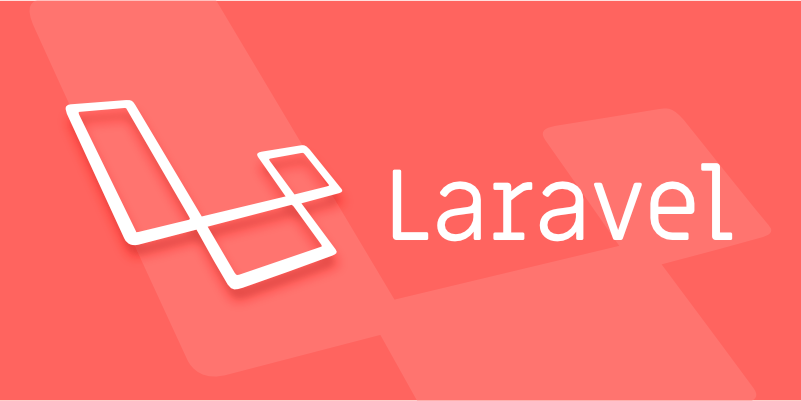Laravel service providers are used to register and configure core services for applications and third-party packages. 1. The main tasks include binding the class to the service container for automatic parsing; 2. Trigger setting logic such as registration event listening, loading configuration, etc.; 3. Applicable to building packages, binding multiple related services or global settings; 4. The register() method is used to bind services, and the boot() method is used to perform initialization operations. Understanding its role can better organize the structure of the Laravel project.

Laravel service providers are the central place where you register and configure Laravel's core services, as well as your own or third-party packages. Think of them like setup scripts that run when your app boots up — they tell Laravel how to create and wire together different parts of your application.

If you're building anything beyond a simple Laravel project, understanding service providers is key. They're what makes Laravel's service container work so smoothly.
What Do Service Providers Actually Do?
Every Laravel app comes with a set of default service providers, and you can add more as needed. At their core, service providers handle two main tasks:

- Binding things into the service container – This means telling Laravel how to create certain classes or services when they're needed.
- Triggering setup logic – Like registering event listeners, loading configuration files, or bootstrapping features.
For example, if you have a custom logging service, a service provider is where you'd bind it to the container so it can be resolved automatically via dependency injection.
Here's a very basic binding:

$this->app->bind(Logger::class, function ($app) {
return new FileLogger(config('logging.file'));
});This tells Laravel: “When someone asks for a Logger, give them a FileLogger instance using the config from logging.file.”
When Should You Create a New Service Provider?
You'll want to create a custom service provider in a few common situations:
- You're building a package or reusable module.
- You need to bind multiple related services into the container.
- You want to separate setup logic instead of dumping everything into
AppServiceProvider. - You're setting up something global, like middleware, view composers, or event subscribers.
To generate one:
php artisan make:provider MyCustomServiceProvider
Then register it in config/app.php under the providers array (or use Laravel's auto-discovery if applicable).
The Two Main Methods: Register vs Boot
Each service provider has at least two important methods: register() and boot() .
register()
- Use this to bind things into the container .
- Don't assume other services are available here.
- Keep it lightweight.
boot()
- Use this to do actual setup work .
- All bindings have been registered by now.
- Good for registering event listeners, routes, views, etc.
Example:
public function boot()
{
view()->composer('partials.nav', NavigationComposer::class);
} This line hooks up a view composer, but you wouldn't do that in register() because the view system might not be ready yet.
Tips for Working with Service Providers
- Don't overuse them. If it doesn't involve the container or needs early boot logic, maybe it belongs elsewhere.
- Group related bindings into a single provider rather than creating one for every tiny class.
- Use service providers to keep your app organized — especially when onboarding new developers.
- Be careful with heavy operations in
boot(). It runs on every request, so performance matters.
Basically that's it. Service providers might seem abstract at first, but once you get used to how Laravel uses them to load and prepare components, they become a natural part of structuring your app.
The above is the detailed content of What are service providers in Laravel?. For more information, please follow other related articles on the PHP Chinese website!

Hot AI Tools

Undress AI Tool
Undress images for free

Undresser.AI Undress
AI-powered app for creating realistic nude photos

AI Clothes Remover
Online AI tool for removing clothes from photos.

Clothoff.io
AI clothes remover

Video Face Swap
Swap faces in any video effortlessly with our completely free AI face swap tool!

Hot Article

Hot Tools

Notepad++7.3.1
Easy-to-use and free code editor

SublimeText3 Chinese version
Chinese version, very easy to use

Zend Studio 13.0.1
Powerful PHP integrated development environment

Dreamweaver CS6
Visual web development tools

SublimeText3 Mac version
God-level code editing software (SublimeText3)
 Creating Custom Validation Rules in a Laravel Project
Jul 04, 2025 am 01:03 AM
Creating Custom Validation Rules in a Laravel Project
Jul 04, 2025 am 01:03 AM
There are three ways to add custom validation rules in Laravel: using closures, Rule classes, and form requests. 1. Use closures to be suitable for lightweight verification, such as preventing the user name "admin"; 2. Create Rule classes (such as ValidUsernameRule) to make complex logic clearer and maintainable; 3. Integrate multiple rules in form requests and centrally manage verification logic. At the same time, you can set prompts through custom messages methods or incoming error message arrays to improve flexibility and maintainability.
 Working with pivot tables in Laravel Many-to-Many relationships
Jul 07, 2025 am 01:06 AM
Working with pivot tables in Laravel Many-to-Many relationships
Jul 07, 2025 am 01:06 AM
ToworkeffectivelywithpivottablesinLaravel,firstaccesspivotdatausingwithPivot()orwithTimestamps(),thenupdateentrieswithupdateExistingPivot(),managerelationshipsviadetach()andsync(),andusecustompivotmodelswhenneeded.1.UsewithPivot()toincludespecificcol
 Sending different types of notifications with Laravel
Jul 06, 2025 am 12:52 AM
Sending different types of notifications with Laravel
Jul 06, 2025 am 12:52 AM
Laravelprovidesacleanandflexiblewaytosendnotificationsviamultiplechannelslikeemail,SMS,in-appalerts,andpushnotifications.Youdefinenotificationchannelsinthevia()methodofanotificationclass,andimplementspecificmethodsliketoMail(),toDatabase(),ortoVonage
 Understanding Dependency Injection in Laravel?
Jul 05, 2025 am 02:01 AM
Understanding Dependency Injection in Laravel?
Jul 05, 2025 am 02:01 AM
Dependency injection automatically handles class dependencies through service containers in Laravel without manual new objects. Its core is constructor injection and method injection, such as automatically passing in the Request instance in the controller. Laravel parses dependencies through type prompts and recursively creates the required objects. The binding interface and implementation can be used by the service provider to use the bind method, or singleton to bind a singleton. When using it, you need to ensure type prompts, avoid constructor complications, use context bindings with caution, and understand automatic parsing rules. Mastering these can improve code flexibility and maintenance.
 Strategies for optimizing Laravel application performance
Jul 09, 2025 am 03:00 AM
Strategies for optimizing Laravel application performance
Jul 09, 2025 am 03:00 AM
Laravel performance optimization can improve application efficiency through four core directions. 1. Use the cache mechanism to reduce duplicate queries, store infrequently changing data through Cache::remember() and other methods to reduce database access frequency; 2. Optimize database from the model to query statements, avoid N 1 queries, specifying field queries, adding indexes, paging processing and reading and writing separation, and reduce bottlenecks; 3. Use time-consuming operations such as email sending and file exporting to queue asynchronous processing, use Supervisor to manage workers and set up retry mechanisms; 4. Use middleware and service providers reasonably to avoid complex logic and unnecessary initialization code, and delay loading of services to improve startup efficiency.
 Managing database state for testing in Laravel
Jul 13, 2025 am 03:08 AM
Managing database state for testing in Laravel
Jul 13, 2025 am 03:08 AM
Methods to manage database state in Laravel tests include using RefreshDatabase, selective seeding of data, careful use of transactions, and manual cleaning if necessary. 1. Use RefreshDatabasetrait to automatically migrate the database structure to ensure that each test is based on a clean database; 2. Use specific seeds to fill the necessary data and generate dynamic data in combination with the model factory; 3. Use DatabaseTransactionstrait to roll back the test changes, but pay attention to its limitations; 4. Manually truncate the table or reseed the database when it cannot be automatically cleaned. These methods are flexibly selected according to the type of test and environment to ensure the reliability and efficiency of the test.
 Choosing between Laravel Sanctum and Passport for API authentication
Jul 14, 2025 am 02:35 AM
Choosing between Laravel Sanctum and Passport for API authentication
Jul 14, 2025 am 02:35 AM
LaravelSanctum is suitable for simple, lightweight API certifications such as SPA or mobile applications, while Passport is suitable for scenarios where full OAuth2 functionality is required. 1. Sanctum provides token-based authentication, suitable for first-party clients; 2. Passport supports complex processes such as authorization codes and client credentials, suitable for third-party developers to access; 3. Sanctum installation and configuration are simpler and maintenance costs are low; 4. Passport functions are comprehensive but configuration is complex, suitable for platforms that require fine permission control. When selecting, you should determine whether the OAuth2 feature is required based on the project requirements.
 Implementing Database Transactions in Laravel?
Jul 08, 2025 am 01:02 AM
Implementing Database Transactions in Laravel?
Jul 08, 2025 am 01:02 AM
Laravel simplifies database transaction processing with built-in support. 1. Use the DB::transaction() method to automatically commit or rollback operations to ensure data integrity; 2. Support nested transactions and implement them through savepoints, but it is usually recommended to use a single transaction wrapper to avoid complexity; 3. Provide manual control methods such as beginTransaction(), commit() and rollBack(), suitable for scenarios that require more flexible processing; 4. Best practices include keeping transactions short, only using them when necessary, testing failures, and recording rollback information. Rationally choosing transaction management methods can help improve application reliability and performance.






